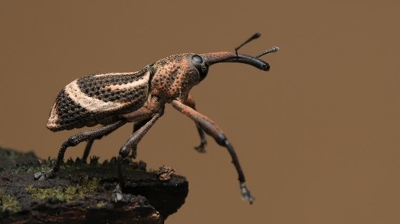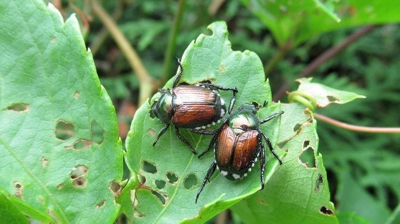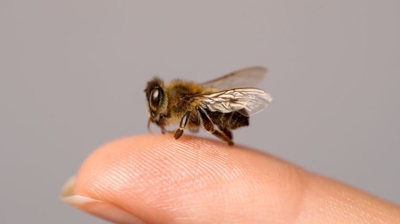
Arlington VA Pest Control
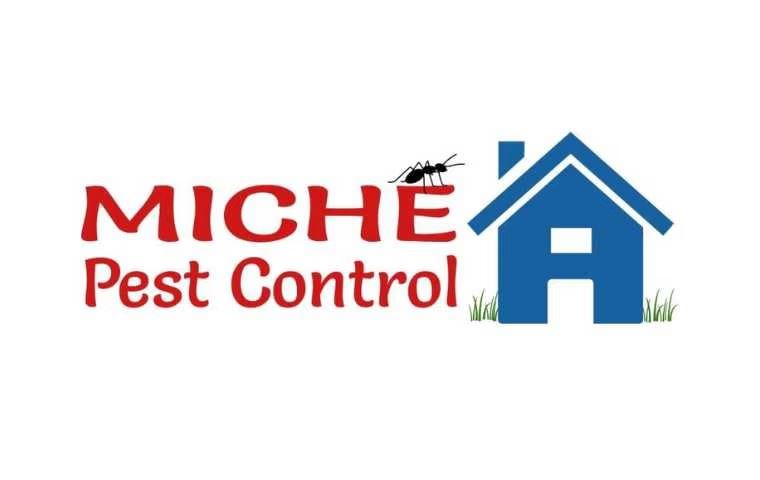
Arlington VA Pest Control Company
Miche Pest Control is a pest control company that provides residential and commercial pest control services in Arlington VA and the surrounding areas. Miche Pest Control was started in 2019 by Tom Miche, after he had worked for years as a pest control technician and service manager. Since its formation in 2019, Miche Pest Control has provided high quality pest control, rodent control, mosquito control, and termite control services. Miche Pest Control has earned a 4.9 star rating with over 1,000 reviews.
With service times available as soon as the next business day, you can count on Miche Pest Control. Contact us - get your free quote on the best pest control in Arlington VA, and we'll add a free upgrade to include termite monitoring services when you enroll in one of our quarterly pest control plans. Call today or book online!
Arlington VA Pest Control Services
- Ant Control
- Bed Bug Control
- Bee Control
- Bug Control
- Carpenter Ant Control
- Carpenter Bee Control
- Centipede Control
- Clover Mite Control
- Cockroach Control
- Commercial Pest Control
- Cricket Control
- Earwig Control
- Fire Ant Control
- Flea Control
- Hornet Control
- Lady Bug Control
- Millipede Control
- Mosquito Control
- Mouse Control
- Rat Control
- Residential Pest Control
- Rodent Control
- Silverfish Control
- Spider Control
- Springtail Control
- Stink Bug Control
- Termite Control
- Tick Control
- Vole Control
- Wasp Control
- Yellowjacket Control
Arlington VA Exterminator
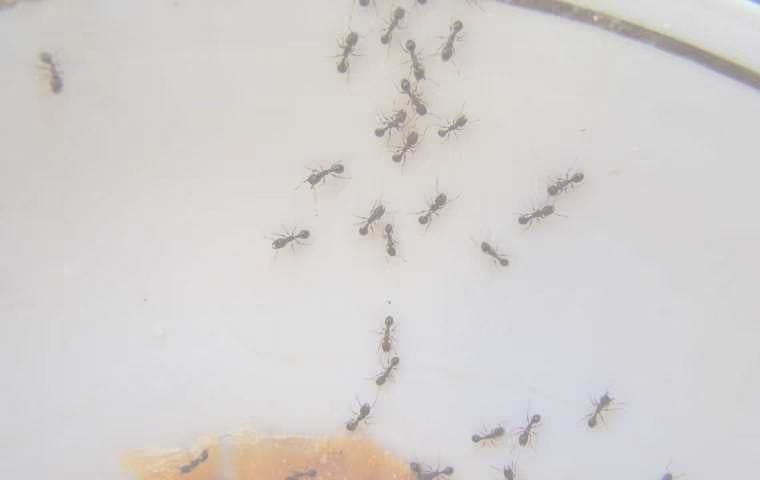
For dependable pest management services, turn to the exterminating company Miche Pest Control. Our knowledgeable team of exterminators serving Arlington VA knows how to detect and manage unwanted pests, to help protect you and your family. We know just how much of a problem these pests can cause, impacting your comfort at home, and we offer vigilant service, so you don't have to live with pests any longer than necessary. Contact us - or book online!
Arlington VA Residential Pest Control
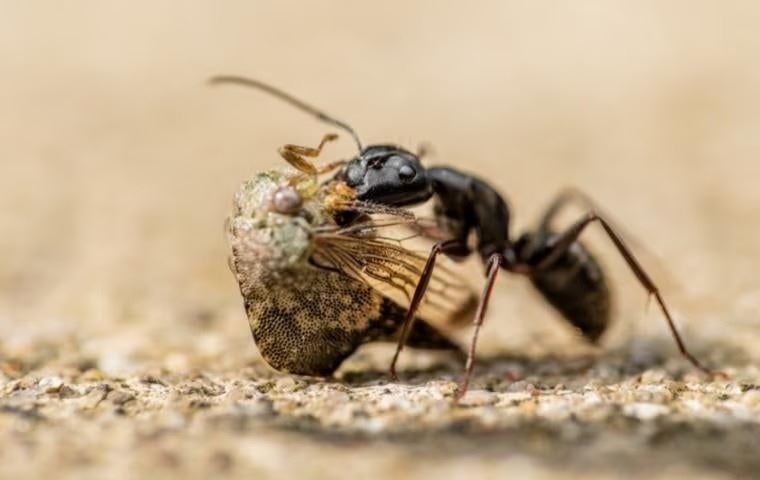
Our most popular residential service plan in Arlington VA is our quarterly pest control plan. Our goal is to provide the best pest control service possible. With that in mind, we implement a multi-step process to get rid of pests fast, and keep them from coming back. Each of our quarterly residential pest control services includes:
- Treatment & Removal of Spider Webs
- Treatment & Removal of Wasp & Hornet Nests
- Exterior Perimeter Power-Spray
- Exterior Perimeter Granular Application
- Exterior Crack & Crevice Treatment
- Interior Treatment As Needed
- Miche Pest Control's Pest Free Guarantee
Our pest control service is designed to be so thorough on the outside, that you shouldn’t need treatment on the inside, but treatment inside your home is always included, at no extra cost. With safety in mind, we use products that are registered with the EPA, and labeled for use in/around homes, hospitals, day cares, and pet kennels. The first service is designed to get rid of a pest infestation, if you have one, but most of our customers use our services preventatively. Each service works proactively to keep your home protected from pests. The products we use don’t last forever, so once the products break down and egg sacs start hatching, we come back and maintain the protective barriers that we’ve applied around your home. These services are typically provided quarterly, but Miche Pest Control’s Pest Free Guarantee means that if you have issues with pests in between your quarterly services, all you have to do is let us know and we’ll come back at no additional cost.
To keep things simple and affordable, we bill monthly for our quarterly pest control service. Give us a call - get your free quote on the best pest control in Arlington VA and we’ll add a free upgrade to include termite monitoring services when you enroll in one of our quarterly pest control plans. Call today or book online!
Our most popular residential service plan in Arlington VA is our quarterly pest control plan. Our goal is to provide the best pest control service possible. With that in mind, we implement a multi-step process to get rid of pests fast, and keep them from coming back. Each of our quarterly residential pest control services includes:
- Treatment & Removal of Spider Webs
- Treatment & Removal of Wasp & Hornet Nests
- Exterior Perimeter Power-Spray
- Exterior Perimeter Granular Application
- Exterior Crack & Crevice Treatment
- Interior Treatment As Needed
- Miche Pest Control's Pest Free Guarantee
Our pest control service is designed to be so thorough on the outside, that you shouldn’t need treatment on the inside, but treatment inside your home is always included, at no extra cost. With safety in mind, we use products that are registered with the EPA, and labeled for use in/around homes, hospitals, day cares, and pet kennels. The first service is designed to get rid of a pest infestation, if you have one, but most of our customers use our services preventatively. Each service works proactively to keep your home protected from pests. The products we use don’t last forever, so once the products break down and egg sacs start hatching, we come back and maintain the protective barriers that we’ve applied around your home. These services are typically provided quarterly, but Miche Pest Control’s Pest Free Guarantee means that if you have issues with pests in between your quarterly services, all you have to do is let us know and we’ll come back at no additional cost.
To keep things simple and affordable, we bill monthly for our quarterly pest control service. Give us a call - get your free quote on the best pest control in Arlington VA and we’ll add a free upgrade to include termite monitoring services when you enroll in one of our quarterly pest control plans. Call today or book online!
Rodent Control In Arlington VA

Miche Pest Control provides rodent control services in Arlington VA and the surrounding areas. Our goal is to provide the best rodent control service possible. With that in mind, we implement a multi-step process to get rid of rodents fast, and keep them from coming back. Rodent control services from Miche Pest Control include:
- Installing Tamper-Resistant Rodent Bait Stations Outside
- Identifying Rodent Entry Points
- Sealing Small Rodent Entry Points
- Documenting & Reporting Large Rodent Entry Points
- Trapping Rats & Mice Inside As Needed
- Miche Pest Control’s Pest Free Guarantee
With safety in mind, we use rodenticides that are registered with the EPA, labeled for use in/around homes, hospitals, day cares, and pet kennels, and secured inside tamper-resistant rodent bait stations. The first service is designed to get rid of a rodent infestation, if you have one, but most of our customers use our services preventatively. Each service works proactively to keep your home protected from rodents by maintaining an uninterrupted supply of fresh bait. Rodents are constantly exploring, looking for new sources of food and shelter, so they consistently find and are eliminated by the bait in our stations. Bundled with pest control, these services are typically provided quarterly, but Miche Pest Control’s Pest Free Guarantee means that if you have issues with pests in between your quarterly services, all you have to do is let us know and we’ll come back at no additional cost.
To keep things simple and affordable, we bill monthly for our rodent control services, regardless of their frequency. Give us a call - get your free quote on the best rodent control in Arlington VA and when you get our pest and rodent control services, we’ll add in a free upgrade to include termite monitoring at no additional cost. Call today or book online!
Where Do Rats In Arlington, VA Live?
The most common kind of rat in Arlington VA is the Norway rat. Norway rats burrow in the ground, under buildings and rubbish. They usually live well within 150 feet of a food and water source; rats require about one ounce of food a day and a half ounce of water. They feed on familiar food, preferring meats and grains, and are cautious of new items or new food. It is important to know that rats love dog feces. According to the Health Department in Arlington, VA, rats in Arlington VA can be found in, but are not limited to, the following areas:
- Near food sources, in and around garbage cans, and trash piles
- Under overgrown bushes, vines, tall grasses, and rocks
- Around pet food dishes, bird feeders and vegetable gardens
- In abandoned cars, appliances, and furniture
- Under storage sheds
- Under air conditioning units
- Under firewood
If you're having issues with or suspect an infestation of rats (or mice) in Arlington VA, we can help. Keep reading to learn more about Miche Pest Control's rodent control services in Arlington VA:
Rodents In Arlington VA
.2403250737550.jpg)
Rats and mice in Arlington VA often make their nests in and around homes & office buildings. Rats can squeeze through holes the size of a quarter, and mice can squeeze through holes the size of a dime. In Arlington, the 2 most common rodents are the Norway Rat and the House Mouse. Miche Pest Control provides rodent control services in Arlington VA and the surrounding areas. We use multiple methods to get rid of rodents fast:
- Inside Rodent Trapping
- Inspecting For Entry Points
- Exclusion (Sealing The Entry Points)
- Installing Tamper Resistant Rodent Bait Stations Outside
After getting control of your rodent infestation, we recommend maintaining the service for at least one year, since rodent activity levels vary throughout the different seasons. After the first service, we return at least every 3 months to make sure the bait stations are fully loaded with fresh bait, and we inspect for any new entry points while we're there. Especially in a densely populated area like Arlington VA, it can be difficult to eliminate all potential sources of rodents (rats can travel as far as 150 feet searching for food), so keeping the service long term is the best way to keep rodents away for good.
5 Things To Do To Protect Yourself From Mosquitoes In Arlington VA
- Use an effective mosquito repellent, such as DEET, Picaridin or Lemon-Eucalyptus oil. Make sure you follow the directions on the product's label.
- Ensure the screens on doors and windows are in good order - these help prevent mosquitoes from entering your home.
- Be aware that mosquitoes in Arlington are most active during dawn and dusk, but can still bite during the day, depending on the species.
- Always wear long sleeves and pants when you're outdoors, and don't forget to wear socks.
- Drain all sources of standing water to prevent mosquitoes from breeding. This includes water that build ups in containers such as birdbaths and buckets, as well as areas of your yard in which water can form puddles.
Tick, Flea & Mosquito Control In Arlington VA
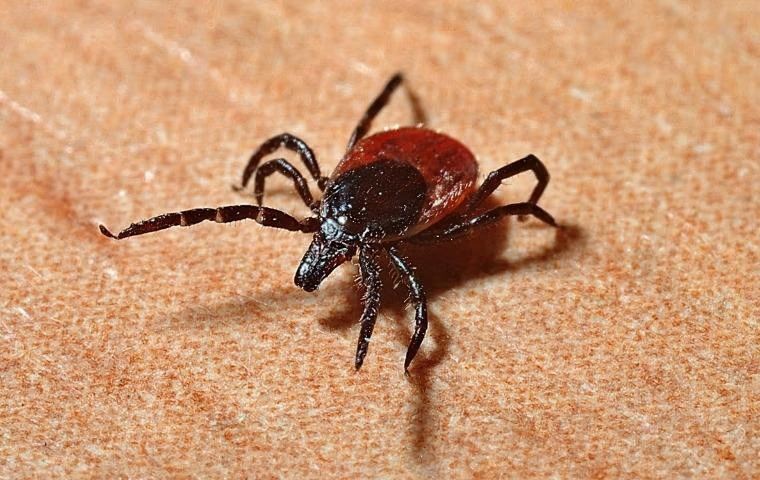
Fldeas and ticks are both active year round in Washington DC and the surrounding areas. While these pests are active year round, their peak season tends to be in the spring, summer, and fall, coinciding with mosquito season. Miche Pest Control provides both seasonal and year round treatment options for its yard services for ticks, fleas, and mosquitoes.
Our goal is to provide the best tick, flea, and mosquito services possible. Mosquitoes, fleas, and ticks all tend to be most concentrated in areas with tall grass, standing water, leaf litter, under sheds, and other places with shade and moisture, but ticks especially will sometimes be found in the middle of a yard, having fed on and fallen off of animals in your yard. Our tick, fleas & mosquito services treat all of the foliage in the yard, as well as grassy areas, and under decks and sheds. We use a combination of products designed to eliminate adult mosquitoes, ticks, and fleas, as well as their larval stages, effectively breaking the pests’ life cycles.
With safety in mind, we use products that are registered with the EPA, labeled for use in/around homes, hospitals, day cares, and pet kennels. The first service is designed to get rid of an existing infestation, if you have one, but most of our customers use our services preventatively. Each service works proactively to keep your yard protected from ticks, fleas, and mosquitoes. The products we use don’t last forever, so once the products break down and eggs start hatching, we come back and re-apply the protective treatments that we’ve applied around your yard. These services are typically provided once per month, but Miche Pest Control’s Pest Free Guarantee means that if you have issues with ticks, fleas, or mosquitoes in between your monthly services, all you have to do is let us know and we’ll come back at no additional cost.
Because we will sometimes schedule your monthly services as frequently as every 3-4 weeks, to keep things consistent, simple and affordable, we bill monthly, year round, on the same day every month for our tick, flea & mosquito services. Give us a call to get your free quote on the best tick, flea and mosquito control in Arlington VA or if you would prefer to schedule your first service yourself, you can book online!
Termite Control In Arlington VA
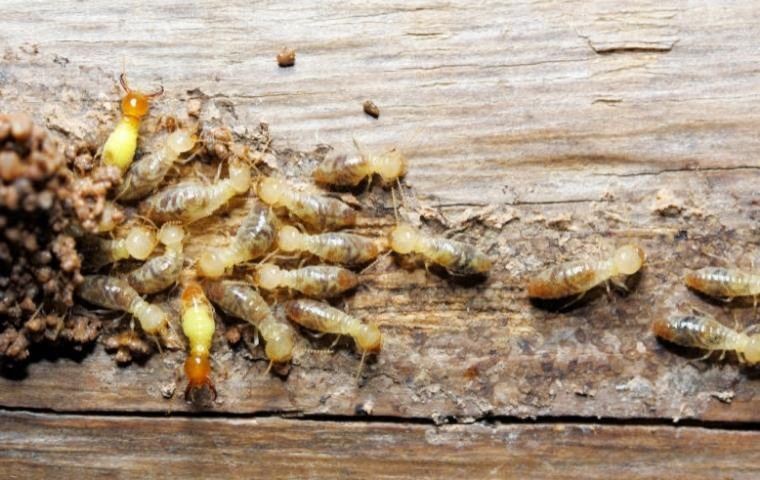
In Arlington VA, there are typically 8 to 10 subterranean termite colonies per acre of land, with an average of 80,000 to 100,000 termites per colony. As a Certified Sentricon Specialist®, Miche Pest Control provides termite control services in Arlington VA and the surrounding areas. Miche Pest Control gets rid of termite infestations fast by utilizing the Sentricon System®. Included in your termite control program from Miche Pest Control:
- An inspection to locate active termites, termite damage, and conducive conditions
- Installation of Sentricon stations every 10 feet around the perimeter of your home
- Installation of above ground bait stations in areas with termite damage and/or live, foraging termites
- Complete termite colony elimination, including the termite queen
- Consistent, ongoing protection from termites
- Annual inspection and service to ensure the Sentricon stations are properly stocked with bait
The Sentricon system is the only termite product awarded the EPA’s Presidential Green Chemistry Challenge Award for superior environmentally responsible chemistry. It is registered with the EPA, and labeled for use in/around homes, hospitals, day cares, and pet kennels, and is even used to protect the White House from subterranean termites. The first service is designed to get rid of an existing termite infestation if you have one, but most of our customers use our services preventatively, to protect what is often their largest investment: their home. These services are typically scheduled once per year, but Miche Pest Control’s Pest Free Guarantee means that if you have issues with termites in between your annual services, all you have to do is let us know and we’ll come back at no additional cost.
To keep things simple and affordable, we bill monthly for our annual services. Give us a call to get your free quote on the best termite control service in Arlington VA. Call today!
Home Pest Control In Arlington VA

There is nothing more frustrating than dealing with pest problems day after day. When pests find their way inside of your home, it's difficult to keep them out – but you don’t have to fight the battle against pests on your own. Calling a professional pest control company and asking for help is the easiest and most effective way to prevent and eliminate pest problems in and around your home.
All pest problems are unique, and whatever your pest control needs may be, Miche Pest Control will develop a home pest control solution that fits your individual needs.
There is nothing more frustrating than dealing with pest problems day after day. When pests find their way inside of your home, it's difficult to keep them out – but you don’t have to fight the battle against pests on your own. Calling a professional pest control company and asking for help is the easiest and most effective way to prevent and eliminate pest problems in and around your home.
All pest problems are unique, and whatever your pest control needs may be, Miche Pest Control will develop a home pest control solution that fits your individual needs.
Commercial Pest Control In Arlington VA
There are few things more off-putting to a customer than walking into your business and seeing pests or signs of pest activity. Spider webs, ant trails, mouse poop, and fly activity are all indicators that will make customers stop, turn around, and walk away. Don’t let your business become a home to insects and rodents! Instead, speak with one of the friendly representatives from Miche Pest Control today. We provide the pest control services you need to maintain a pest-free commercial property.
Fleas, stinging insects, ants, spiders, beetles, cockroaches, rodents, and more are no match for our pest control experts. Our treatments are convenient, discreet, non-invasive, and guaranteed. If pests return between our regularly scheduled visits, we'll provide extra treatments for no extra charge!
Get Rid Of Pests With Miche Pest Control
Bee | Crickets | Hornets | Yellowjackets | Termites | Ticks | Lady Bugs | Rats | Silverfish | Spiders | Carpenter Bees | Cockroaches | Fleas | Wasps | Earwigs | Centipedes | Mosquitoes | Stink Bugs | Carpenter Ants | Ants | Voles | Millipedes | Fire Ants | Mice | Springtails | Clover Mites | Bed Bugs | Hornets | and more!
Click here to see a more complete list of pests that we can get rid of for you.
Arlington VA
Arlington County is a county in the Commonwealth of Virginia, often referred to simply as Arlington, Virginia. The county is situated in Northern Virginia on the southwestern bank of the Potomac River directly across from the District of Columbia, of which it was once a part, under the name Alexandria County. The county is coterminous with the U.S. Census Bureau's census-designated place of Arlington. Arlington is considered to be the second-largest "principal city" of the Washington metropolitan area. If it were incorporated as a city, Arlington would be the fourth most-populous city in the state.
With a land area of 26 square miles, Arlington is the geographically smallest self-governing county in the US, and by reason of state law regarding population density, it has no incorporated towns within its borders. Arlington is home to the Pentagon, Reagan National Airport, and Arlington National Cemetery. In academia, the county contains Marymount University, George Mason University's Antonin Scalia Law School, the administrative offices buildings and graduate programs for the Schar School of Policy and Government and the Jimmy and Rosalynn Carter School for Peace and Conflict Resolution, as well as satellite campuses of the University of Virginia and Virginia Tech.
The area that now constitutes Arlington County was originally part of Fairfax County in the Colony of Virginia. Land grants from the British monarch were awarded to prominent Englishmen in exchange for political favors and efforts at development. One of the grantees was Thomas Fairfax, 6th Lord Fairfax of Cameron, who lends his name to both Fairfax County and the City of Fairfax. The county's name "Arlington" comes via Henry Bennet, Earl of Arlington, a Plantation along the Potomac River, and Arlington House, the family residence on that property. George Washington Parke Custis, the grandson of First Lady Martha Washington, acquired this land in 1802. The estate was eventually passed down to Mary Anna Custis Lee, wife of General Robert E. Lee. The property later became Arlington National Cemetery during the American Civil War, and eventually lent its name to present-day Arlington County.
Nearby Cities:
Washington DC (3 miles), Falls Church VA (4 miles), Alexandria VA (6 miles), Bethesda MD (7 miles), Silver Spring MD (8 miles), Springfield VA (8 miles), Hyattsville MD (9 miles), Fairfax VA (12 miles), Rockville MD (14 miles), Herndon VA (17 miles), Woodbridge VA (18 miles), Bowie MD (19 miles), Gaithersburg MD (19 miles), Upper Marlboro MD (19 miles), Laurel MD (20 miles), Manassas VA (23 miles), Ashburn VA (24 miles), Columbia MD (25 miles), Leesburg VA (30 miles), Ellicott City MD (31), Annapolis MD (33 miles), Baltimore MD (38 miles), Frederick MD (41 miles), Fredericksburg VA (45 miles)

Hear From Our Happy Customers
-
"Professional & Considerate"
I’m pleased with Miche services. Jarvis came today. Professional and considerate. Thank you!
- Judy B. -
"Exceeds Expectations"
I can’t say enough positive things about this company... The tech that came out, Jarvis went above and beyond my expectations. Thank you guys, I will continue using your services.
- Jake M. -
"Fantastic & Patient"
Jarvis was fantastic and patient. He answered my questions with an in-depth explanation and addressed all of my areas of concern. Would love for him to be my assigned tech going forward. Well done!
- Yonnette M. -
"Great Communication"
Tech was on time, communication was great, and he accommodated my needs.
- Alonzo W. -
"Wonderful Service"
Wonderful service. Jarvis is great. Took care of everything I needed. Thank you!
- Henry P. -
"Very Knowledgeable"
The tech that arrived was courteous, professional, and very knowledgeable. He was Great.
- Uerial I.

